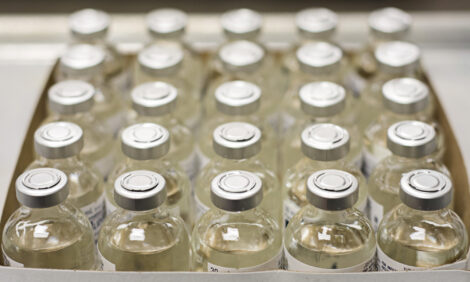



Protein Sources Improved Starter Feed Formulation for Broiler Chickens
US - As the production cycle of broilers has been reduced to such an extent that the starter phase represents more than a quarter of the cycle, poor feeding at this time can have a significant negative impact on the final weight of birds.Poultry CRC project leaders Professor Bob Swick and Professor Paul Iji at the University of New England have recently completed a research project aimed at identifying ingredients and feed formulae that can improve the growth of broiler chicks, post-hatch.
Poor feeding in the starter phase can be due to delayed access to feed and/or water, or use of poor ingredients in formulating the starter diet.
It is difficult to address the former although there are attempts being made at in ovo feeding and in-shed hatching, to improve post-hatch growth. However, the objective of this work was to identify ingredients and feed formulae that could improve growth of broiler chicks post-hatch.
Four experiments were conducted to identify suitable supplements that may be used in developing starter diets for broilers. Three of the experiments were focused on identifying supplements that would enhance the nutritive value of pre-starter diets, to maximise the response of chicks placed on such diets.
An animal protein supplement, spray-dried porcine plasma (SDPP), and a plant protein product, HP AviStart (HPA, a fermented soy concentrate), were investigated. The fourth experiment examined the potential of a complex dietary formulation that would enable the chicks to derive complementary benefits from SDPP and Soycomil® (SPC), a food grade soy protein concentrate (non-fermented) and 10 per ent additional digestible amino acids.
In all experiments, the diets containing the supplements were fed for 10 days, after which the chicks were transferred to regular grower and finisher diets. Experiment one through three had no in feed antibiotic added, whereas experiment four used a commercial dose of zinc bacitracin.
Results demonstrated that SDPP improved both weight gain and FCR during the starter, grower and finisher periods. Notably, it could also be fed over five days rather than 10 days with similar outcomes, thereby reducing cost.
In general, SDPP improved feed costs per unit weight gain, and could be fed in wheat- or maize-based diets. HPA improved weight gain and FCR but was only marginally effective in wheat-based diets compared to maize-based diets. Additional digestible amino acids improved performance in the fourth experiment but SDPP or SPC did not have a positive impact on performance. This suggests that SDPP may be a potential alternative to antibiotics. Further work is necessary to compare ZnB and SDPP in the same experiment.
The fact that soy protein as HPA improved growth while SPC did not may be related to the fermentation residues present in HPA. It would be of interest to compare both sources in a single study.
The results of this project suggest that it is possible to improve growth and FCR if starter diets are supplemented with SDPP. HPA produced a similar effect. These products would require further testing, particularly on litter (all but the fourth experiment were conducted in cages), in order to fully recommend them to industry.
To request a copy of the final report from this project, please contact the Poultry CRC at [email protected].
Also, see this article on Engormix.com.








